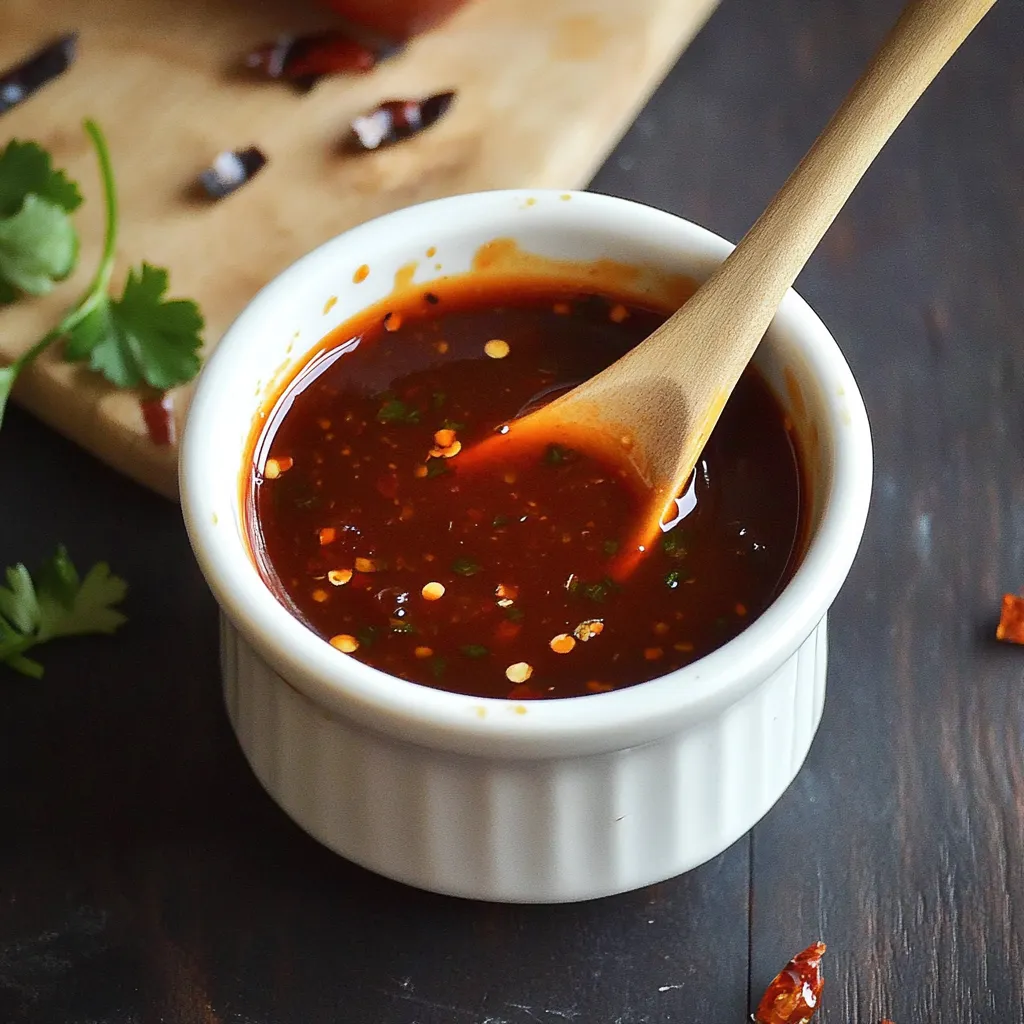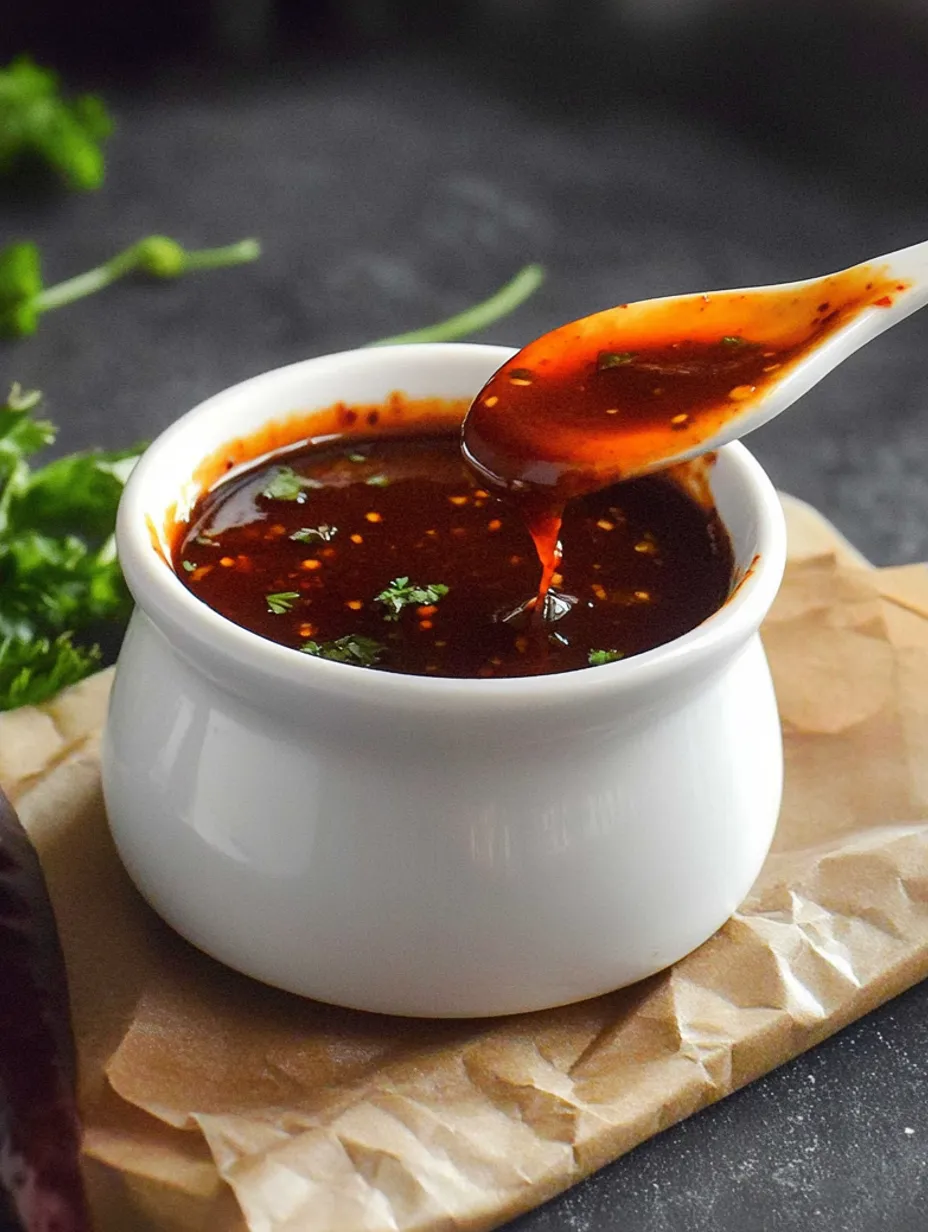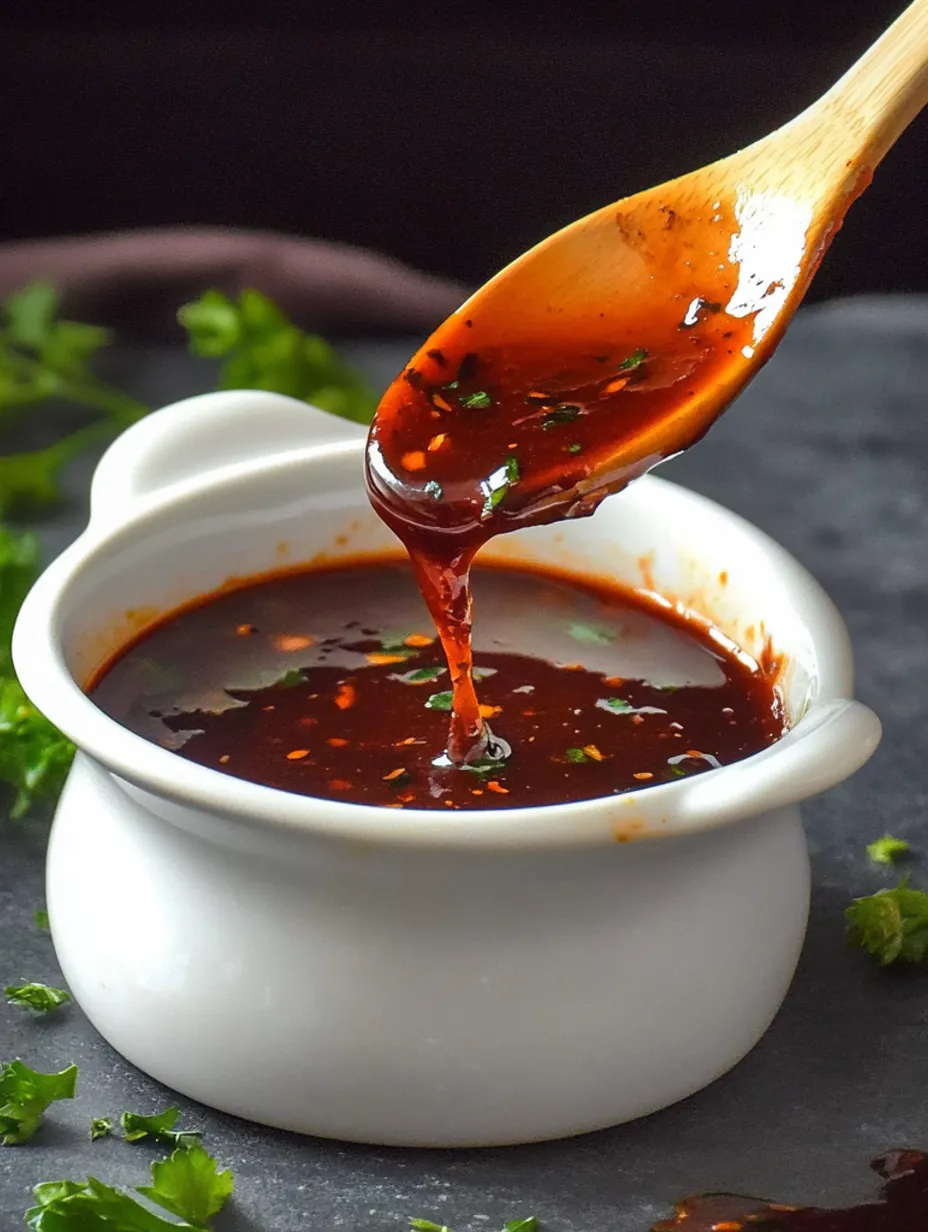 Pin it
Pin it
I started making this Dragon Fire Sauce a few weeks ago, and it's completely transformed my cooking game! Don't let the name scare you off - it's got a kick, but it won't set your mouth on fire (unless you eat it by the spoonful, which I may have tried after one too many glasses of wine). What makes this sauce special is how it balances heat with sweetness, garlicky freshness with gingery warmth, all wrapped up in that incredible umami depth from the gochujang. It's become my secret weapon for turning bland meals into something exciting.
I whipped up a batch last Sunday, and even my roommate (who normally runs from anything spicy) has been sneaking little dabs onto her eggs in the morning. When someone who claims to hate spicy food keeps coming back for more, you know you've got something special.
Quality Ingredients
Flavor FoundationVegetable oil works perfectly as a neutral base that won't compete with other flavors. Fresh garlic is non-negotiable - the pre-minced stuff in jars just doesn't cut it. Fresh ginger adds that distinctive warmth and zing that powdered can't match. Dried red chili flakes bring heat but also that deep, complex chili flavor.
Secret WeaponGochujang is the MVP here - this Korean chili paste is sweet, savory and spicy all at once. It's become much easier to find in regular grocery stores (usually in the international aisle). A little goes a long way, so one tub will last through many batches of sauce. If you can't find it, there's a simple substitute (but it's worth seeking out the real thing).
Balancing ElementsLow-sodium soy sauce adds saltiness and depth without overwhelming everything else. Honey creates the perfect sticky texture while taking the harsh edge off the heat. A splash of water helps bring it all together to the right consistency.
I've made this with both regular and low-sodium soy sauce, and I strongly recommend going with low-sodium. The first time I used regular, it was so salty it overpowered all those beautiful flavors. If you only have regular soy sauce, definitely cut it with water as suggested.
 Pin it
Pin it
Simple Preparation
Aromatic BaseStart with a cold pan and add your oil, minced garlic, and freshly grated ginger. This is key - adding these aromatics to an already hot pan can burn them in seconds. Turn the heat to medium and gently warm everything, stirring constantly. You're not trying to brown anything, just coaxing out the natural oils and flavors. Once the oil starts to sizzle a bit, just two minutes is all you need. Your kitchen should smell amazing by this point.
Quick AssemblyTake the pan off the heat (this prevents the chili flakes from burning) and add all your remaining ingredients - the chili flakes, gochujang, soy sauce, honey, and water. Grab a whisk and mix until you have a smooth, glossy sauce that's thick enough to coat the back of a spoon but still pourable. If it seems too thick, add a tiny splash more water.
Storage SolutionLet the sauce cool completely before transferring to a clean glass jar with a tight lid. Glass works better than plastic since the sauce won't stain it, and you don't have to worry about any chemical interactions with the spicy mixture. Keep it refrigerated, where it'll stay good for 7-10 days - though I doubt it will last that long!
I learned through trial and error that letting the sauce cool completely before jarring it makes a big difference in how the flavors develop. When I transfer it while still warm, some of the bright, fresh notes seem to get muted.
My first batch turned out way spicier than I expected because I got heavy-handed with the chili flakes (I love them too!). The sauce was delicious but definitely pushed my heat tolerance. Now I stick to the recipe amounts for a more versatile sauce that everyone can enjoy.
 Pin it
Pin it
Favorite Uses
This sauce is incredibly versatile - I've been finding new ways to use it almost daily. My current favorite is mixing a spoonful into scrambled eggs before cooking them. The heat and complexity turns a basic breakfast into something I'd happily pay for at a fancy brunch spot. For a quick dinner, I tried the author's chicken trick - sautéing chicken pieces until nearly done, then adding a tablespoon of the sauce to finish. Served over rice with scallions on top, it's better than takeout and takes less time than delivery. It makes an incredible dipping sauce for dumplings or spring rolls, and adding a teaspoon to instant ramen transforms it into something that tastes much more special. I've even mixed a small amount with mayo for the best spicy sandwich spread ever - perfect with turkey or chicken. This Dragon Fire Sauce has completely changed my cooking game. It's that perfect condiment that bridges the gap between hot sauce and flavor enhancer, adding not just heat but dimension to everything it touches. Whether you're a heat-seeker or just someone looking to add a little excitement to your meals, this sauce delivers without overwhelming. Make a batch this weekend - your taste buds will thank you!
Frequently Asked Questions
- → What is gochujang and where can I find it?
- Gochujang is a Korean red chili paste that adds spice, sweetness and umami. You can find it in Asian grocery stores, international aisles of supermarkets, or online.
- → How spicy is this sauce?
- It has a moderate heat level that most people can enjoy in small amounts. The honey balances the spice, but you can reduce the chili flakes for a milder version.
- → What can I use Dragon Fire Sauce on?
- It's incredibly versatile! Try it on rice bowls, noodles, stir-fries, as a marinade for meats, drizzled on tacos, or as a dipping sauce for dumplings.
- → Can I make this sauce vegan?
- Yes, simply substitute the honey with maple syrup or agave nectar for a vegan version that's just as delicious.
- → How can I make this sauce gluten-free?
- Use gluten-free gochujang (check labels carefully) and tamari instead of soy sauce to make a gluten-free version.
